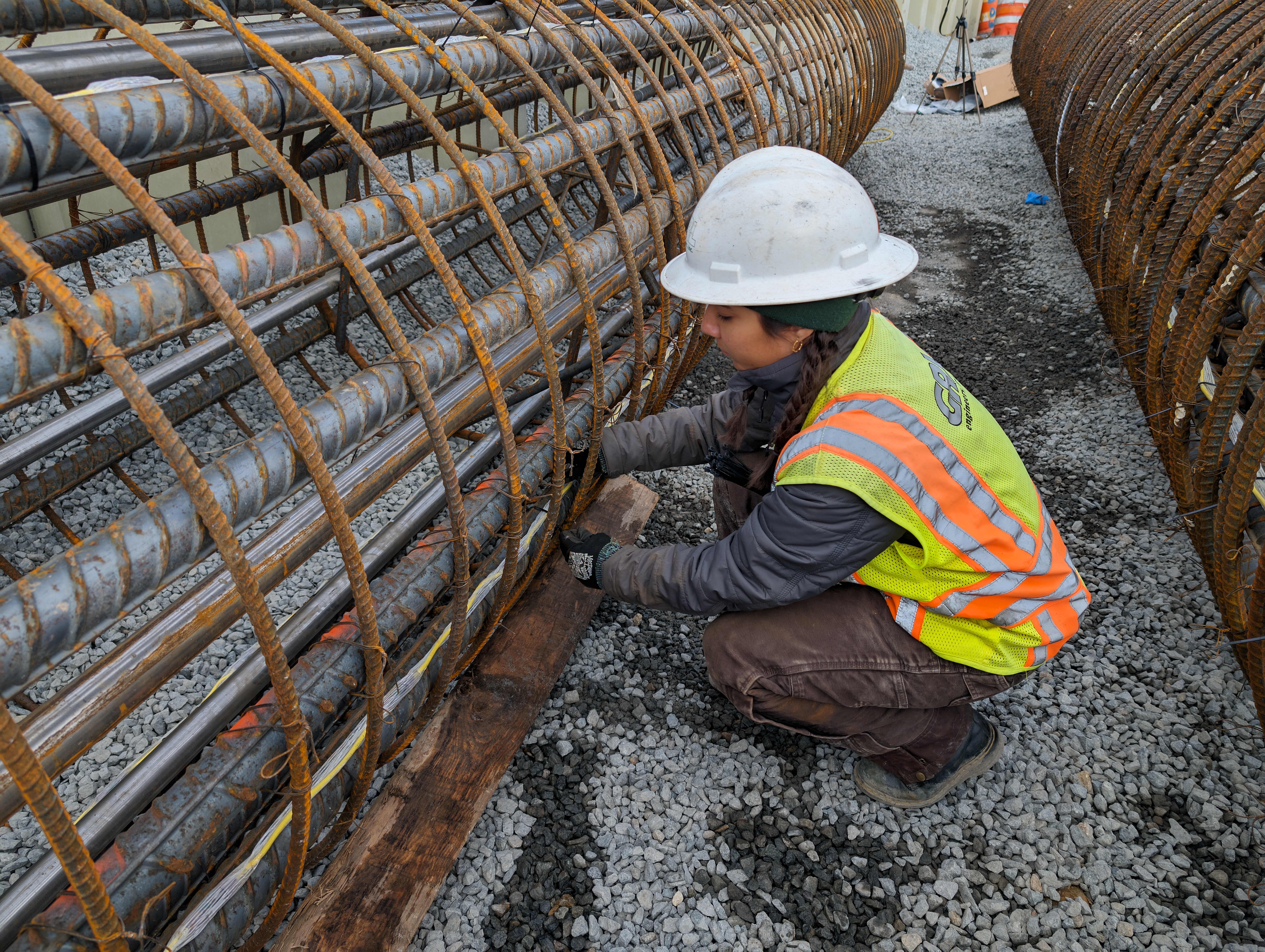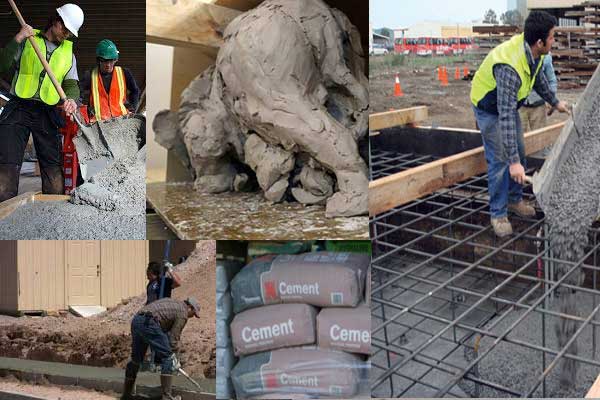The Crucial Function of Concrete Structure in Structural Integrity and Longevity
When it concerns developing a residential or commercial property, the foundation is more vital than you might believe. Concrete foundations give unmatched toughness and durability, ensuring your structure can stand up to various ecological obstacles. Without a solid base, you run the risk of possible concerns like changing or fracturing, which can jeopardize security and value. Comprehending the nuances of concrete foundations could be the secret to maintaining your financial investment for years ahead. So, what should you take into consideration following?
Understanding the Significance of Concrete Foundations
Concrete foundations are important to the total security of any type of structure, as they give the important support needed to stand up to different loads and ecological conditions. When you assume concerning building a home or an industrial area, the foundation is the very first thing you need to think about. It serves as an obstacle versus dampness, shielding your building from water damage. A well-placed concrete foundation additionally protects against settling and shifting, which can bring about splits in walls and floors. You'll want to guarantee that the foundation is properly designed and reinforced, as this influences the durability of your building. Furthermore, a solid structure can improve energy efficiency by decreasing air leakages. Remember, neglecting the relevance of a concrete foundation can lead to costly fixings down the line. Spending in a quality foundation upfront is crucial for the stability and longevity of your structure.
Benefits of Concrete Structures for Structural Honesty
While many elements add to a structure's structural honesty, concrete foundations offer unmatched resilience and strength. You'll appreciate that concrete can hold up against severe climate condition, resisting both wetness and temperature variations. This strength implies your structure is less likely to experience breaking or changing over time, which can endanger its safety.Additionally, concrete's inherent weight offers a strong base, protecting against movement during all-natural events like quakes or floods. When you select a concrete foundation, you're likewise going with low upkeep; unlike timber, it won't rot or draw in parasites, saving you money and time in repairs.Moreover, concrete's fire resistance offers included safety and security, ensuring your structure can endure high temperatures without significant damage. Overall, buying a concrete foundation means you're prioritizing the long-term stability and stability of your building, making it a wise option for any kind of building task.
Usual Types of Concrete Foundations
When it concerns constructing structures, recognizing the usual types of concrete foundations can assist you make educated choices for your project. The most widespread kinds include slab-on-grade, crawl space, and full basement foundations.A slab-on-grade foundation is a straightforward, cost-effective choice, where a thick concrete piece is poured straight on the ground. This type functions well in warm climates, as it lessens warm loss.Crawl room foundations elevate the home somewhat above ground, enabling for air flow and accessibility to plumbing and electrical systems. This style can help avoid wetness issues.Full cellar foundations offer added living or storage area while offering excellent architectural assistance. They require even more excavation and are usually used in cooler climates to stop frost heave.
Aspects to Think About When Creating a Concrete Foundation

Ideal Practices for Setting Up Concrete Foundations
When you're setting up a concrete foundation, correct website prep work is necessary to ensure security (West Coast GE Concrete contractors). You'll also need to understand reinforcement methods to improve toughness and longevity. Ultimately, do not neglect the healing process, as it plays an essential duty in achieving a solid foundation
Website Prep Work Value
Although it may appear uncomplicated, correct website prep work is important for assuring a solid and resilient concrete structure. Start by getting rid of the area of any kind of debris, greenery, or organic material that could endanger the foundation's stability. Next off, examine the soil type and compaction; you might require to dig deep into or include materials to create a steady base. Level the ground to assure even weight distribution and prevent clearing up problems in the future. Installing proper drain systems is also important to protect against water build-up, which can compromise the structure with time. Ultimately, mark out the foundation's measurements accurately to lead the pouring process. By complying with these actions, you'll set the phase for a successful concrete foundation that stands the examination of time.
Reinforcement Techniques Explained
As soon as the website is correctly prepared, the next action in guaranteeing a strong concrete structure involves executing efficient support techniques. You need to begin by utilizing steel rebar, which provides tensile toughness and helps avoid splitting. Lay the rebar in a grid pattern, ensuring it's raised using spacers to preserve correct protection. Furthermore, take into consideration making use of wire mesh for additional assistance, particularly in locations subject to hefty tons. Do not forget to connect the rebar junctions safely with cord. For larger structures, fiber reinforcement can improve resilience, lowering the danger of contraction splits. Constantly adhere to neighborhood structure codes and standards to make certain conformity. By using these support techniques, you'll greatly enhance your foundation's stamina and long life, laying a solid foundation for your structure.
Treating Refine Essentials
To guarantee your concrete structure treatments effectively, it's important to keep sufficient moisture and temperature problems promptly after pouring. Begin by covering the surface with a wet cloth or plastic bed linen to retain moisture. This maintains the concrete hydrated, avoiding fractures and ensuring toughness. You must additionally check the temperature level; excellent treating conditions are in between 50 ° F and 90 ° F. If it's as well hot, haze the surface frequently to avoid rapid dissipation. For winter, consider using shielding coverings to keep heat. Aim for a review treating duration of a minimum of 7 days, as this is important for optimum stamina development. By adhering to these ideal practices, you'll boost your structure's sturdiness and durability, ensuring structural integrity for many years to find.
Upkeep of Concrete Foundations for Longevity
To maintain your concrete foundation solid and long-term, routine examinations are vital. You should likewise assure efficient water drainage services remain in place to prevent water damage. If you identify any fractures, resolving them quickly will conserve you from bigger issues down the line.

Normal Examinations and Analyses
While routine assessments and assessments could appear like a task, they're vital for preserving the stability of your concrete structure. By consistently looking for splits, shifts, or signs of wear, you can catch prospective problems before they intensify right into expensive repair services. Try to find any type of water merging around the structure or uncommon settling, as these can signal underlying problems. It's also a good idea to keep track of any kind of adjustments in your home's structure, like doors that stick or windows that don't open smoothly. Keeping a document of your assessments aids track changes in time, allowing for proactive upkeep. Eventually, these assessments guarantee your structure continues to be secure, sustaining the long life and security of your entire framework. Do not ignore this vital facet of homeownership!
Reliable Drainage Solutions
Regular inspections can disclose concerns like drainage problems that could jeopardize your concrete foundation's security. To stop water build-up, ensure your seamless gutters and downspouts direct water away from the structure. Installing French drains pipes can efficiently reroute surface area and groundwater, lowering pressure on your structure why not find out more walls. Additionally, rating the dirt around your home aids guarantee that water moves away, as opposed to merging near your foundation.Consider making use of sump pumps in areas vulnerable to flooding, as they actively eliminate excess water. Frequently look for clogs in drainage systems and clear them immediately. You'll protect your foundation's integrity and longevity by taking these positive measures. Keep in mind, efficient drainage remedies are necessary for maintaining a strong, long lasting concrete foundation.
Motivate Fracture Fixes
When you observe fractures in your concrete foundation, resolving them quickly is important for keeping its long life. Small cracks can rapidly progress into larger concerns, jeopardizing the structural honesty of your home. On a regular basis check your foundation for indications of damage, such as straight or upright cracks. If you detect any, don't wait-- fix them instantly. You can use epoxy injections or concrete patching compounds, which are effective for sealing fractures. Constantly comply with the producer's guidelines and consider getting in touch with a professional for considerable damages. Remember, timely repairs not only improve your structure's resilience but likewise conserve you money in the future by protecting against more comprehensive fixings down the line. Stay proactive, and your foundation will certainly continue to be strong and secure.
Resolving Common Problems With Concrete Structures
Concrete structures can encounter different problems in time, making it essential to recognize and address them quickly. Among one of the most typical issues is breaking, which can occur due to temperature level variations or clearing up dirt. If you observe fractures, it's important to analyze their dimension and deepness; tiny fractures can typically be sealed, while larger ones may require professional evaluation.Water intrusion is one more significant issue. Excess moisture can lead to mold growth and structural deterioration. Assurance proper drainage around your foundation to mitigate this threat. In addition, try to find signs of shifting or bowing wall surfaces, as this can suggest underlying issues with your foundation's stability.Regular assessments are fundamental to capture these problems early. If you identify any type of concerning signs, do not think twice to seek advice from a structure specialist. By staying proactive, you can maintain the honesty and long life of your concrete foundation, ensuring your home continues to be secure and safe.
Frequently Asked Questions
Exactly How Does Soil Type Influence Concrete Foundation Efficiency?
Soil kind greatly influences concrete foundation performance. If you have actually got large clay, as an example, it can trigger shifting and fracturing. Sandy soil could lead to clearing up. Understanding your soil aids guarantee a steady structure.
Can Concrete Foundations Be Repaired if Damaged?
Yes, you can repair broken concrete structures. Relying on the degree of the damages, methods like epoxy shot or slab jacking can recover stability. It's finest to consult a professional for efficient remedies.
What Is the Common Life Expectancy of a Concrete Structure?
A concrete foundation commonly lasts 30 to 100 years, depending on aspects like dirt problems, environment, and maintenance. You'll wish to watch on it to assure it stays in great form throughout its life expectancy.
Are There Alternative Products to Concrete for Foundations?
Yes, there are choices to concrete for foundations, like steel, lumber, or perhaps recycled materials. Each choice has unique advantages and downsides, so you need to consider your task's details demands when selecting the best eco concrete material.
How Does Environment Impact Concrete Foundation Resilience?
Climate substantially influences concrete structure sturdiness (Concrete Contractors Rancho Cucamonga). Extreme temperature levels, wetness, and freeze-thaw cycles can weaken the product, bring about fractures and architectural problems. You should think about neighborhood climate conditions when intending your structure to assure lasting efficiency